
What Is Skunk Cannabis?
You've probably heard people talking about strains of super-skunk as a way to talk about all strong cannabis. However, the term Skunk originated as the name for one of the first-ever hybrid strains of commercially available, stabilized cannabis. As such, it has an important role in the history of modern cannabis. Let's delve in.
The terms Skunk, cannabis Skunk, and Skunk weed are often the name given to all types of cannabis that are considered extremely strong, especially by the media in the United Kingdom as a way to scare and demonise cannabis use. However, for those of us in the know, this is a sad degradation of an incredible strain of cannabis. The original Skunk #1 was one of the first stabilised and commercially grown hybrid strains of weed, and kick-started a whole new era of cannabis growing! Never before had something been so reliably good until skunk weed came along. Skunk #1 seeds spread worldwide, guaranteeing growers a strain that would grow fast, potent and big for the first time.
What Is Skunk?
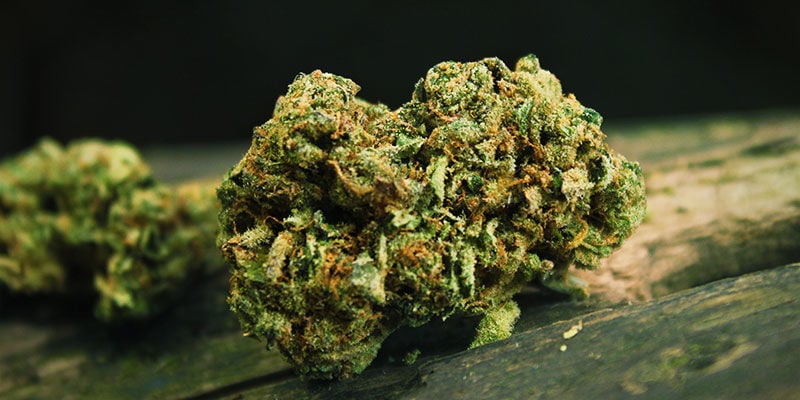
But what really is Skunk? Skunk was the name given to the first hybridised, commercial version of this cannabis strain. These days it is broader, but refers to strains that come from that lineage (more on this lineage shortly). Powerful, reliable and hefty, strains derived from Skunk #1 are much-loved throughout the cannabis community. And whilst new versions continue to be bred and released, nothing can top that classic Skunk #1!
Characteristics Of Skunk #1 Weed
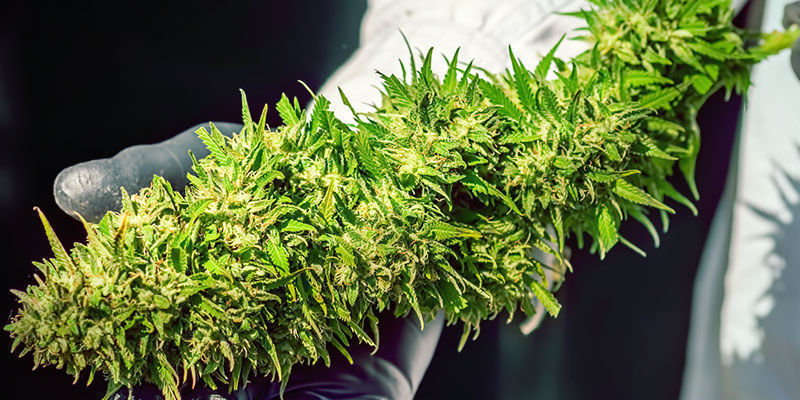
Skunk tends to be sativa leaning, with uplifting highs and robust flavours. The high has a potency borrows mostly from the sativa lineage, whilst being tempered by the relaxing indica influence.
However, when it comes to growth, the indica genetics shine through. Staying fairly low and growing fast, it retains the benefits of indica over sativa. Not to mention it comes with indica's reliable and generous yields. Its trichome production has also made it an old-school favourite among those who like to make hash.
It was the first (at least mainstream) strain of weed to marry the best characteristics of each species of cannabis—it's no wonder it became so popular.
How does it smell? Well, a bit like a skunk. Some even describe it as smelling like a dead animal. However, take this with a pinch of salt as we think it's a bit of an exaggeration and everybody seems to love it! It has an excellent sweet, earthy aroma that is hard to place.
What Does Skunk Weed Look Like?
Skunk looks like your classic weed (probably because it is). Dark, with a good covering of orange-red pistils and dark, broad leaves—you can almost see how it's going to smell and feel to smoke.
Where Did Skunk Come From?
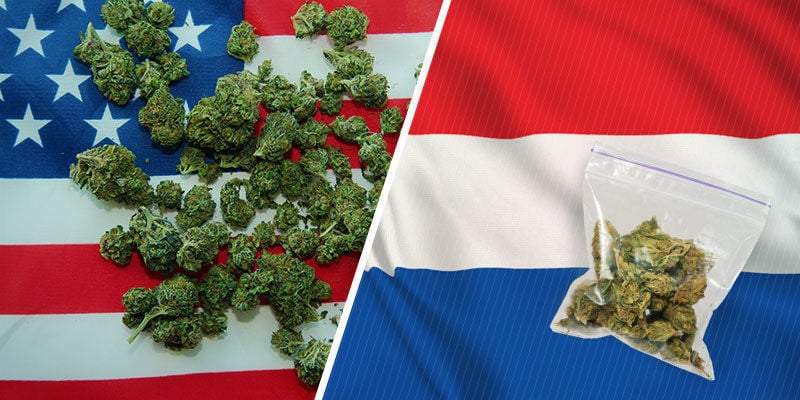
During the 1970s in the US, virtually all the weed was imported. The vast majority came from south of the border, Acapulco Gold from Mexico and Colombian Gold from Colombia.
Since all the weed was seeded back then, the first experiments in US domestic cultivation came from what we call today "bag seed"—or simply seeds that come with your buds. Everything was an experiment, and by the mid 1970's these pioneer cultivators were learning that growing exclusively female plants to maturity would greatly improve the quality and quantity of the weed.
During this time, growers discovered "Sinsemilla" or seedless weed. In 1976 "Sinsemilla Marijuana Flowers" by Jim Richardson & Arik Woods was a hit with stoners and served as an early guide book for US growers. It was during this decade that a grower known as "Sam the Skunkman" created the first iteration of Skunk #1.
In 1983 Sam The Skunkman arrived in Amsterdam with thousands of seeds, some say hundreds of thousands.
His collection consisted of the legendary cerebral sativas and experimental hybrids, including his prototype Skunk #1 (Colombian Gold x Afghani #1) x Acapulco Gold. He was essentially fleeing the US with the crown jewels of the Sacred Seeds collective in the wake of a DEA crackdown—or so the story goes.
Collaborations with now legendary Dutch breeders resulted in the Skunk #1 as we know it. To propose that Sam arrived with 100% perfected marijuana strains is disingenuous and difficult to believe, not to mention it undermines the contributions of Dutch masters.
Dutch cultivators were experimenting with indica strains during the same period as the US sativa growers. The fusion of these genetics and, most importantly, adaptation for indoor cultivation all happened in the Netherlands, not in California.
By the late 1980s, HID lighting was bringing cultivation indoors, and Skunk #1 became the world's first well-known commercial hybrid strain. Winning the first Cannabis Cup in 1988 made the mariujana strain a legend, and it has only grown ever since.
The 75% sativa to 25% indica hybrid blend was to become the benchmark of quality. Growers fell in love with the fast blooming productive plant with the uniquely pungent odour. Easy to grow even for novices and potent in experienced hands.
Modern Day Skunk Genetics
Whilst they all come from Skunk #1, there are many different Skunk derivatives available today. This variety gives growers and users a good spectrum of strains to choose from, meaning that whatever your requirements, from high, taste to yield, you're likely to be able to satisfy them.
The Top 3 Skunk Strains
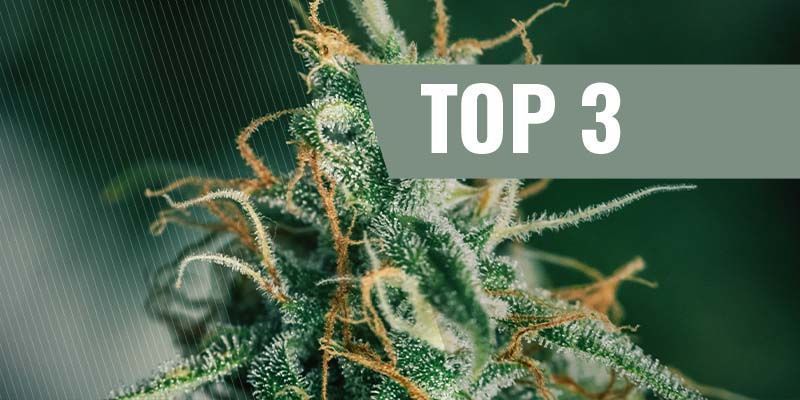
In case you're already sold and want to get your hands on some Skunk seeds, we've compiled a list of our three favourite Skunk strains to get you started. Whether you're a purist after a classic original Skunk #1 strain, a hands-off grower after an auto marijuana strain, or a fiend after the biggest yields available, we've got you covered.
As these are all Skunk strains with a related lineage, the effects and flavours are going to be very similar—a sweet, skunky scent and a smooth potency most users can enjoy. That being the case, we'll cover them here, and get into the specifics of yields, grow times, etc., below. Being a hybrid, Skunk has a euphoric, cerebral start that gradually descends into a powerful, full-body stone fuelled by the indica genetics. Potent and suited more to the end of the day when you won't have to be dealing with much, Skunk is a great cannabis strain to chill and see in the night with.
In terms of flavour, what can you say? Skunk is incredibly pungent. It stinks! So make sure you're somewhere where people won't take poorly to you smoking stinky spliff. Likewise, take the necessary precautions when growing it, as you don't want to stink out the whole neighbourhood. The pungency of Skunk can make it unpleasant to some, but most seem to love it. Even if you're a little tentative at first, once you begin associating that stank with those effects, you'll soon salivate at the very thought of it!
Classic Skunk (Zamnesia Seeds)
This marijuana strain hasn't deviated from the genetics of Skunk #1 at all. Why, because why change something so great? This is one for the purists and the historians. If you want to feel a bit of cannabis history coursing through your veins, then Classic Skunk is the one for you!
Just because it's old, don't think you'll be losing out. After all, it's the cannabis strain against which all others are judged. It can grow up to 150cm, and offers generous yields of up to 500g/m² of 17% THC buds when grown well.
Offering huge rewards to advanced growers, and resilience and ease to novices, whatever your growing experience, you'll be pleased to try Classic Skunk. Even more so when the flowering period only lasts 7–8 weeks!
Amnesia Skunk Automatic (Zamnesia Seeds)
Amnesia Skunk Automatic is a hybridisation of (Skunk x Amnesia Haze) x Ruderalis. So the effects take a little from Haze cannabis strains too. Nonetheless, on the whole, it remains very skunky. Growing to only 85cm indoors, it's a perfect choice for those looking for a compact plant to fit into a small grow space. Outdoors it stretches little more, hitting between 120 and 150cm. Respectively, you're looking at around 350g/m² or 180g/plant of 17% THC buds. Once the flowering period has begun, it should take no more than 10 weeks to reach harvest time.
Skunk XL (Royal Queen Seeds)
This is one for those who just cannot get enough Skunk in their lives and need that extra yield. Yielding up to 650g/m² indoors, you can expect a very satisfying weigh-in at harvest time. Outdoors, things get even better. If grown in the perfect climate, you can get up to 600g/plant with a THC content of 15%! Get a few of these in the sun, and you'll have sorted yourself out for a while.
Also, with a short flowering period—8–9 weeks—this is fast and well suited to growing outdoors in more northern climates, such as the UK or the Netherlands.
The Difference Between Skunk And Cannabis
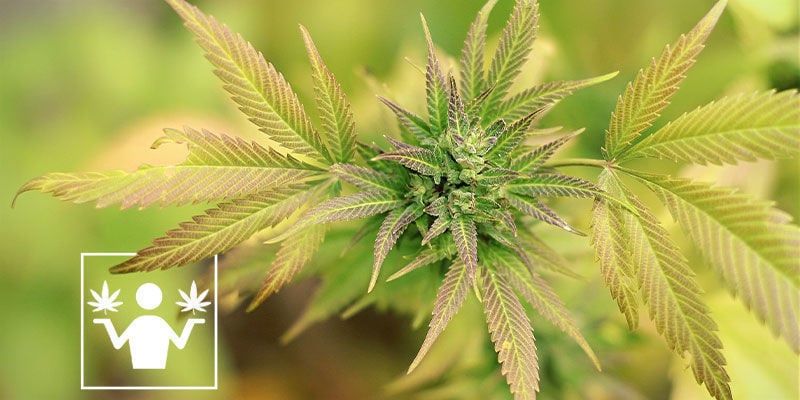
Across the mainstream news in Europe, Skunk regularly receives much undeserved bad press. This shabby reporting is not just limited to British tabloids. It is by now an opinion shared by almost everyone outside the cannabis community—even by many people who smoke cannabis.
Even in Ireland, where the cannabis strain has been a favourite with growers and users since the late 1990's, broadsheets such as the Irish Independent are filled with 21st Century Reefer Madness. A recent article by Alan O'Keefe grossly misrepresented the strain. "Benzos are mostly used to help addicts to come back down from intense highs which they get after taking drugs such as Skunk—a powerful cannabis drug"- Irish Independent 14/9/16.
But the term Skunk that the media refer to, and the Skunk that the cannabis community refer to are two entirely different things. Skunk for the media is a catch-all term used to denote any cannabis strain of particularly strong, potent, modern cannabis—often as a way to demonise cannabis use and THC in general. Whereas Skunk within the cannabis community refers specifically to cannabis strain derived from Skunk #1.
So whilst Skunk is cannabis, not all super-strong cannabis is classified by the term Skunk.
Is Skunk Cannabis Bad?

No, or, no worse than other strains of cannabis. Likewise, it's not necessarily better either. Some people will simply react poorly to cannabis, or certain strains, whilst others will have a wonderful time.
So don't be afraid of something that's advertised as Skunk. After all, Skunk can be found at nearly every seed company across the world, and has got to be one of the most popular strains of all time for a reason, right?
-
 5 min
19 July 2021
The Origins Of OG Kush Cannabis
From Florida to the West Coast and into the hands of cannabis lovers all over the globe: that's the story of OG Kush in a nutshell. Read on for an in-depth look at one of the biggest names in...
5 min
19 July 2021
The Origins Of OG Kush Cannabis
From Florida to the West Coast and into the hands of cannabis lovers all over the globe: that's the story of OG Kush in a nutshell. Read on for an in-depth look at one of the biggest names in...
-
 3 min
7 March 2018
The Origin Of Northern Lights And The Top 3 Northern Lights...
Few strains have a reputation like Northern Lights. Known for its resinous buds and resilience, this strain has forever changed the cannabis industry since it first hit the shelves in the 1980s. In...
3 min
7 March 2018
The Origin Of Northern Lights And The Top 3 Northern Lights...
Few strains have a reputation like Northern Lights. Known for its resinous buds and resilience, this strain has forever changed the cannabis industry since it first hit the shelves in the 1980s. In...
-
 3 min
19 February 2018
The Origin Of Cheese Cannabis And The Top 3 Cheese Strains
From their attention-grabbing aroma to their pleasant flavour, there's more than one reason to fall in love with a Cheese cannabis strain. So, let's learn all about the top three, shall we?
3 min
19 February 2018
The Origin Of Cheese Cannabis And The Top 3 Cheese Strains
From their attention-grabbing aroma to their pleasant flavour, there's more than one reason to fall in love with a Cheese cannabis strain. So, let's learn all about the top three, shall we?
-
 3 min
17 January 2018
The Origin of GG4 Cannabis And The Top 3 GG4 Strains
If you're looking for the strongest strains on the market, then look no further than these three GG#4 strains. Packed with beneficial cannabinoids and overflowing with flavour, these varieties each...
3 min
17 January 2018
The Origin of GG4 Cannabis And The Top 3 GG4 Strains
If you're looking for the strongest strains on the market, then look no further than these three GG#4 strains. Packed with beneficial cannabinoids and overflowing with flavour, these varieties each...














 United States
United States










